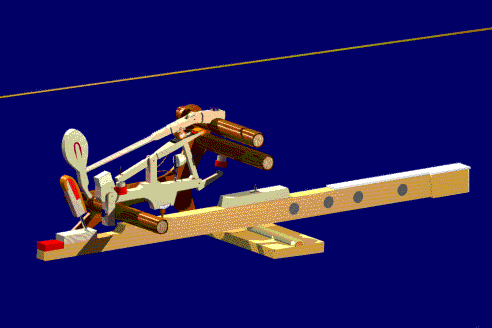| Piano
Technique ~
Exceptional
technique
is achieved by understanding the mechanics of the piano and the way you
physically execute your performance on this remarkable instrument.
-
When
seated at the piano you
should be able to perfectly
balance your arms and hands without playing the notes or feeling any
tension
at all.
-
Fingers
should be naturally
curved, playing
on the tips of the fingers or fleshy part next to your fingernails
(Naturally
keep your fingernails trimmed).
-
You
should form a "paw".
Knuckles should not be caved
in or too high. Knuckles could be fairly flat, but just slightly up,
like
a bridge. The same with the wrists and elbows.
-
Wrists
should be even with the
white keys, never
too high or low.
-
Elbows
should be out from the
body, allowing the
weight of your arm to travel freely to your wrists and allowing for
horizontal
movement across the keys.
-
Always
sit up straight,
shoulders back, create a
small arch in the middle of your back. Imagine a string going up
through
the center of your body, out of your head. Your pelvic bone slightly
turned
in towards the piano.
-
You
should sit far enough from
the piano so that
your elbows are slightly towards the front of your chest.
-
Sit
no more than one half to
three quarters on the
bench. Both feet flat on the floor or pedals.
-
When
each part of your body is
doing its job, playing
is effortless. If it doesn't feel good and wonderful, it is wrong.
Going
to the extreme range of motion is the main cause of most performance
injuries.
-
"You
cannot over practice, only
practice wrong." Dorothy
Taubman
Piano
Action and
You
There
are a few considerations that
you need to
understand in order to develop a beautiful tone and wonderful technique.
1. Weight
behind each note.
This produces
your volume, controlled by your shoulder, arms and forearms. Learning
to
control the weight creates effortless playing. Tension, and strain
using
the muscles of your arm create fatigue, and cramps. Practice just
dropping
your arms into your lap, then onto the keys. Controlled movement, using
the weight of your arm is all you need to play effortlessly with a full
range of dynamics.
2. Speed
behind each note. This
creates
the speed in the hammer, so it rebounds quickly off the string allowing
it to vibrate more freely, producing all of the rich overtones that it
is capable of.
If you
were to strike a stretched
wire with a
pencil, even as you hit the wire, the pencil would be dampening the
wire.
If you could get your pencil away from the wire fast enough, your wire
would vibrate more fully, creating more overtones in the process thus
creating
a wonderful tone quality.
When a
key is depressed, the
escapement mechanism
releases the hammer before it strikes the string. Your "point of sound"
(the little bump) is before you hit the key bed.
Power does not
produce speed. Hitting a key hard retards speed. Aim for the point of
sound,
use your arm weight and simply let your fingers fall.
It is
also important that you allow your
fingers to continue down to the key bed, even though your hammer has
already been released. This is a safety feature that is
regulated into
a well maintained piano allowing the action parts to reset themselves
(referred to as aftertouch). If this is not done,
you might be
experiencing double strikes, poor tone and sluggish repetition.
Good
technique is effortless
because everything
is at its absolute minimum.

All Rights Reserved by
K. Wayne Land ©1998
To learn more about the inner workings of a piano, click the picture...
Free Piano Lessons, Pianos For Sale

|